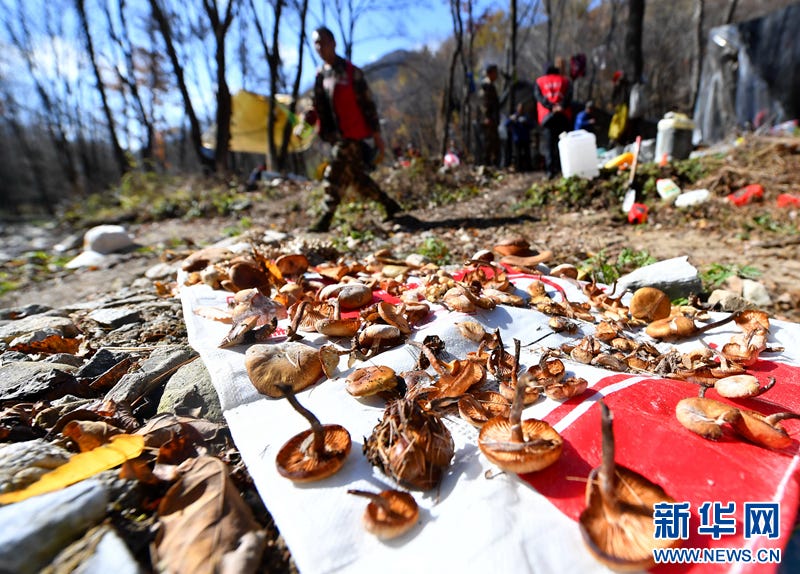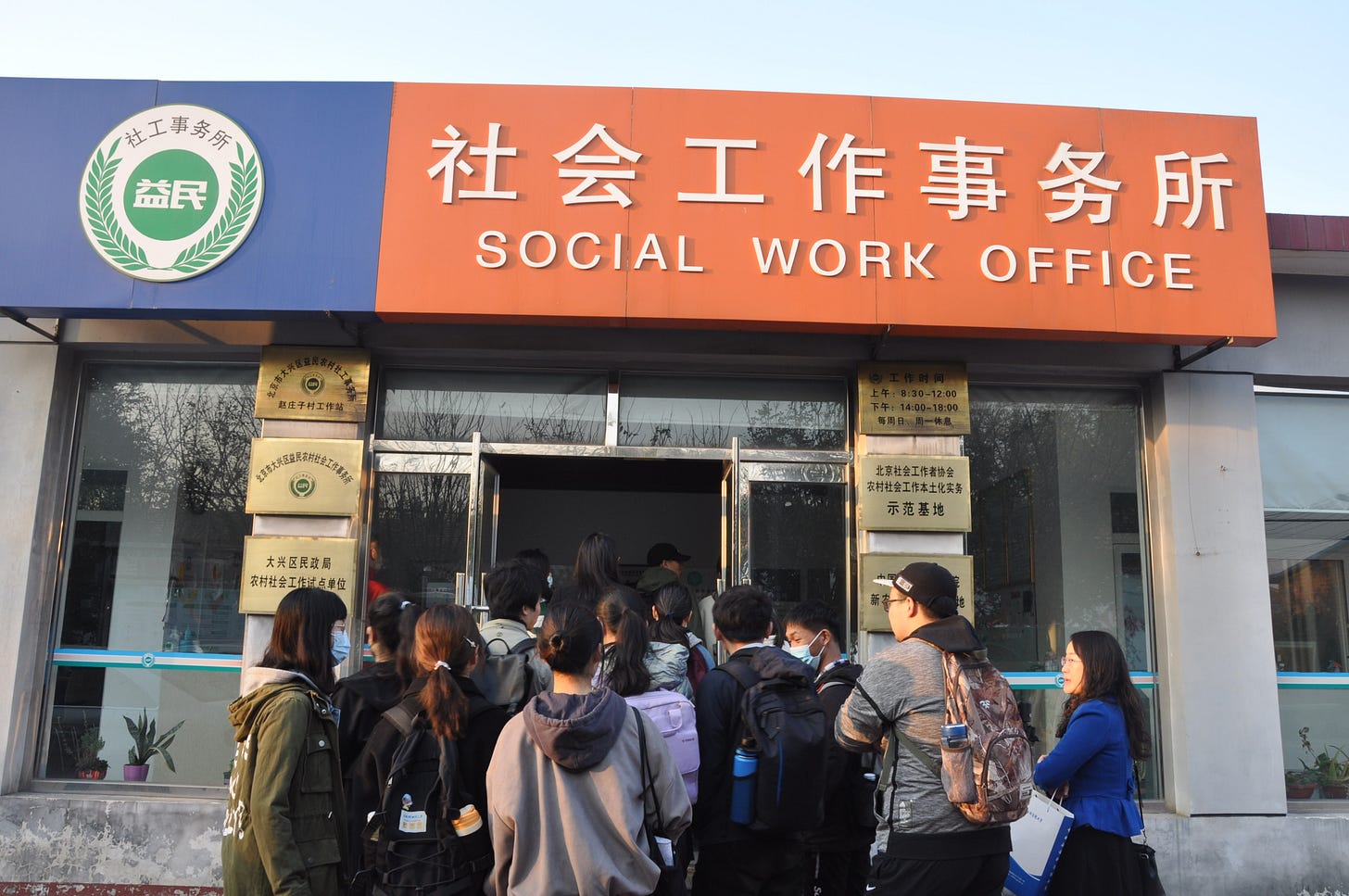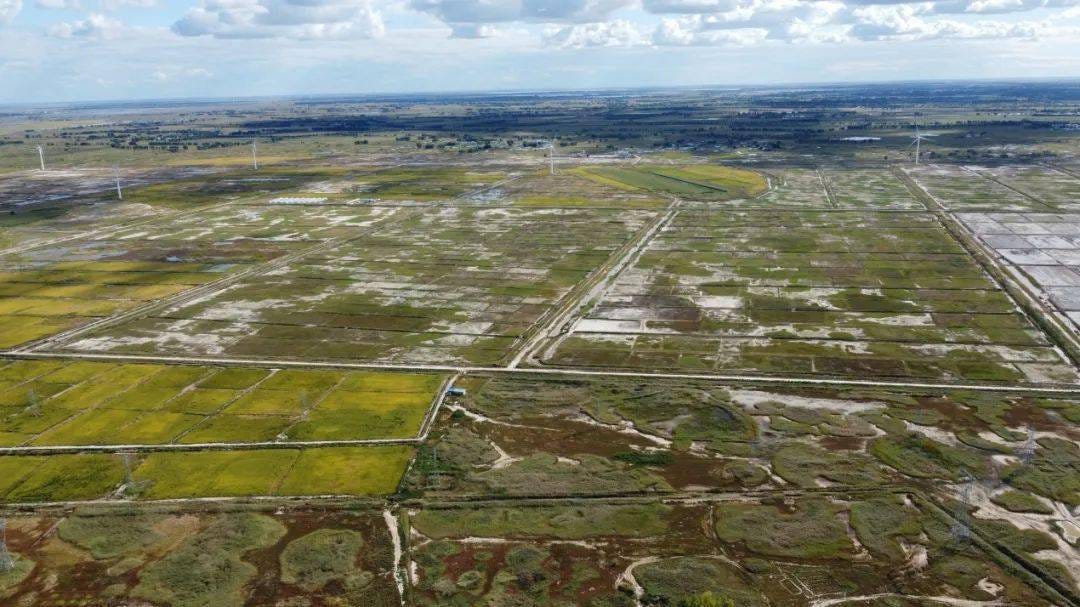Welcome to this week’s edition of The Harvest, the weekly dispatch from This Week in Rural China. This week, we explore the dynamic transformations unfolding in rural China, where communities and agricultural sectors are responding to a range of environmental and economic challenges. Our focus ranges from the professional development of community workers in Liaoning to the cutting-edge technology being used to reclaim salt-alkali land in Hebei. We also look closer at Gansu’s strategic land management practices and the national ‘Big Food’ initiative that has helped lay the groundwork for agricultural modernisation and food security.
Through these stories, we highlight rural China's resilience and the diverse, locally driven approaches reshaping its agricultural landscape. As always, we welcome your thoughts and insights. Please feel free to share them with us in the comments section or via email at nathan@thisweekinruralchina.com.
We hope this week’s dispatch offers valuable insights as we continue to explore the changing landscape of rural China.
Enhancing Community Workers’ Skills: A View from Liaoning
Community work forms the bedrock of grassroots governance in rural China, addressing diverse challenges ranging from resolving public grievances to managing emergency responses. Accounts of its efficacy are mixed, with positive stories of successful grievance resolutions coexisting alongside criticisms of inefficiency and the escalation of conflicts in some regions, such as mediated land disputes. Therefore, enhancing community workers’ skills is pivotal for improving governance and service delivery in these areas.
A recent initiative led by the Liaoning Provincial Social Work Department, in collaboration with People’s Daily’s ‘Leadership Message Board,’ called for input from netizens on improving the community worker team. The response was interesting, with many practical suggestions from those on the frontlines of community work in cities like Jinzhou, Benxi, and Shenyang.
Building a More Skilled Workforce: Local Solutions for Local Challenges
Gu Jiaxin, a community Party secretary from Jinzhou, proposed a nuanced recruitment strategy designed to meet the specific needs of individual localities. He advocated for integrating professionals from disciplines such as social work, elderly care, psychology, and law into community teams. Crucially, he emphasised that these specialists should operate under the unified leadership of community Party organisations to ensure their expertise aligns with local governance priorities.
Expanding on this, Chai Shixian from Benxi introduced the concept of “one specialisation, many skills.” She argued that while specialised knowledge is indispensable, community workers must also be equipped with a broad skill set to handle diverse challenges, from elder care management to conflict resolution. Chai’s vision included establishing regional training centres offering hands-on experience and opportunities for inter-community knowledge-sharing. Such initiatives highlight the dual necessity of targeted expertise and versatile capabilities in rural governance.
Mental and Physical Well-Being: A Priority for Sustainability
The demands of community work can exact a significant mental and physical toll, particularly in rural areas where resources are often stretched thin. Workers frequently contend with emotionally taxing responsibilities, such as mediating disputes and addressing emergencies, underscoring the importance of holistic well-being initiatives.
Professor Zhang Ping of Northeast University has championed the establishment of psychological service stations across urban and rural areas. Similar initiatives, such as the psychological support centres introduced in Zhejiang Province, have demonstrated measurable benefits, including reduced burnout rates among community workers. However, challenges in scaling these models nationwide—including funding constraints and regional disparities in access—highlight the need for careful adaptation to local contexts. Integrating mental health training into community work programs, Zhang argues, could alleviate emotional strain and enhance workers' effectiveness. Similarly, a contributor from Fushun proposed a comprehensive “health support plan” encompassing regular health check-ups, stress management workshops, and accessible psychological services. These measures are particularly crucial in rural regions with limited healthcare infrastructure.
In conclusion, the responses from community workers and leaders across Liaoning reveal a wealth of insights into the evolving role of grassroots governance in rural China. While many other suggestions were shared, the above ideas represent some of the most recurrent and widely supported themes. These responses reflect a clear recognition of the need for a more skilled, versatile, and well-supported workforce to address the diverse challenges communities face. For outsiders and China watchers, these discussions offer valuable glimpses into the practical concerns and aspirations of those on the ground, providing a nuanced understanding of how local governance is adapting to meet both immediate and long-term needs. Ultimately, these responses underscore the importance of tailored solutions that respect local contexts while promoting broader governance and service delivery improvements.
Salt-Alkali Land Reclamation Through Technology: A Model for Innovation
In Cangzhou, a city in Hebei Province, an innovative initiative is underway that aims to reclaim salt-alkali land by integrating advanced technologies. Salt-alkali land, characterised by its high salinity and alkalinity, presents a significant challenge to agricultural productivity across vast areas of northern China. This initiative, as part of a broader national drive to combat soil degradation, seeks to breed salt-tolerant crops, improve soil quality, and employ digital tools such as cloud platforms and smart farming machinery to monitor and optimise land use.
Salt-alkali land remains a pressing issue in China. Approximately 100 million hectares of land are estimated to be affected by soil salinity and alkalinity, particularly in arid and semi-arid regions such as Hebei. This degraded land reduces agricultural yields and exacerbates food security concerns, particularly as urbanisation and climate change continue to pressure China's agricultural systems. In response, the Chinese government has made the reclamation of such land a key priority in its 13th Five-Year Plan, emphasising sustainable agricultural practices.
Central to the reclamation effort in Cangzhou is a partnership with national research institutions, particularly the Chinese Academy of Agricultural Sciences (CAAS). This collaboration focuses on developing drought-resistant wheat varieties that thrive in saline-alkaline soils. In addition to traditional breeding techniques, the initiative incorporates state-of-the-art technology, including real-time monitoring platforms and intelligent farming machinery, to optimise land use. These technologies facilitate precision agriculture, enabling more efficient irrigation, fertilisation, and pest control, thereby enhancing both productivity and sustainability.
Cloud platforms and big data analytics generate detailed maps of soil conditions and environmental variables, while smart machinery enhances the precision of interventions. Automated tractors and drones equipped with sensors monitor crop health, detect soil moisture levels and apply fertilisers with minimal human intervention. This data-driven approach aims to improve productivity and reduce the environmental footprint of farming in salt-alkali areas.
Despite its promising potential, the long-term success of the Cangzhou model faces several challenges. One major concern is the financial and infrastructural feasibility of scaling such a high-tech approach nationwide, particularly in less-developed rural areas. While the Cangzhou project demonstrates the technological possibilities, implementing it more widely may be constrained by the high costs associated with the equipment and the specialised training required for its use. Furthermore, the environmental sustainability of the model remains uncertain. While salt-tolerant crops may thrive in the short term, concerns persist about the soil's long-term health and the potential accumulation of salt if irrigation practices are not carefully managed.
Additionally, the social and economic implications of this technology-heavy approach deserve attention. The model could marginalise small-scale farmers who lack access to the capital and technical expertise necessary to implement such advanced methods. This could exacerbate existing rural inequalities, particularly if access to new technologies becomes concentrated in more prosperous or better-connected areas. Moreover, the centralised nature of the project, relying heavily on external expertise and top-down planning, may not always align with local knowledge and needs, raising questions about the degree to which local communities are involved in or benefit from such initiatives.
The Cangzhou reclamation project provides a promising example of how technology can address some of rural China's most pressing environmental challenges. However, for outsiders and China watchers, viewing this initiative within the broader context of China’s rural revitalisation and ecological civilisation goals is essential. This project aligns with national efforts to modernise agriculture through technological innovation, a central theme in policies such as “Made in China 2025” and the “green development” objectives outlined in the 13th Five-Year Plan. However, as with many large-scale policy initiatives in China, its long-term success will depend on balancing technological advancement with socio-economic and environmental sustainability.
Wrapping Up 2024: Strengthening Agricultural Modernisation through the “Big Food” Concept
The ‘Big Food’ concept has laid a foundation for agricultural modernisation in 2024, advancing food security and sustainability. Key achievements include record grain output, soybean and oilseed production growth, seed industry revitalisation, and farming equipment innovations.
Significant achievements have been made in food production, with national grain output surpassing 1.4 trillion jin (approximately 700 million tonnes) for the first time. Soybean production has remained stable, and oilseed yields have grown for six consecutive years. The supply of essential food items, such as meat, eggs, milk, vegetables, and seafood, has reached record highs. The edible mushroom industry has also flourished, accounting for over 85% of global production.
Policy frameworks supporting this shift have been continually refined. In September, the State Council released comprehensive guidelines to strengthen food supply diversity, while revisions to food safety and agricultural quality laws have enhanced production standards across the sector.
Technological advancements have played a critical role, with China’s agricultural technology progress reaching 63.2%. Seed industry revitalisation and innovations in farming equipment have improved efficiency and productivity.
As the government continues to prioritise policy support and resource allocation, 2024 is a testament to the successful integration of the “Big Food” concept. The year has seen tangible progress in ensuring food security and fostering sustainable agricultural practices, laying the groundwork for long-term rural revitalisation and economic stability.
Between Mountains and Waters - Photo of the Week for 26 December 2024








